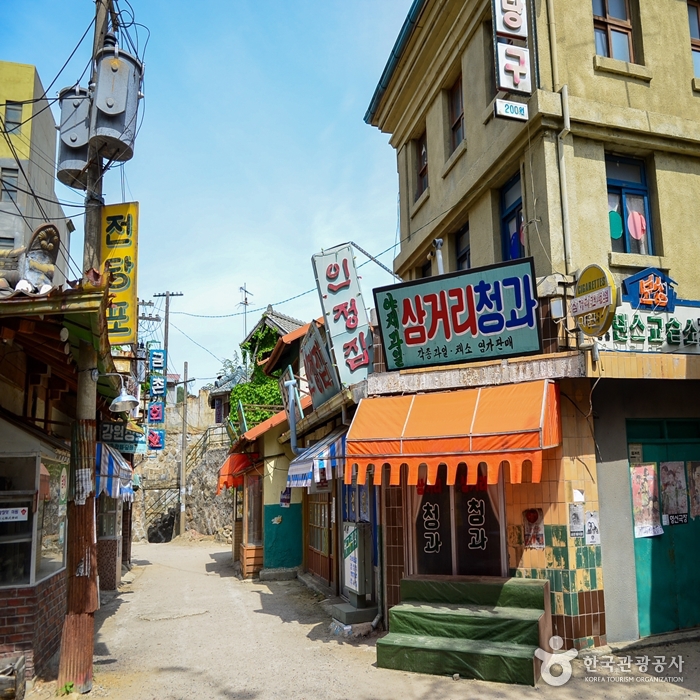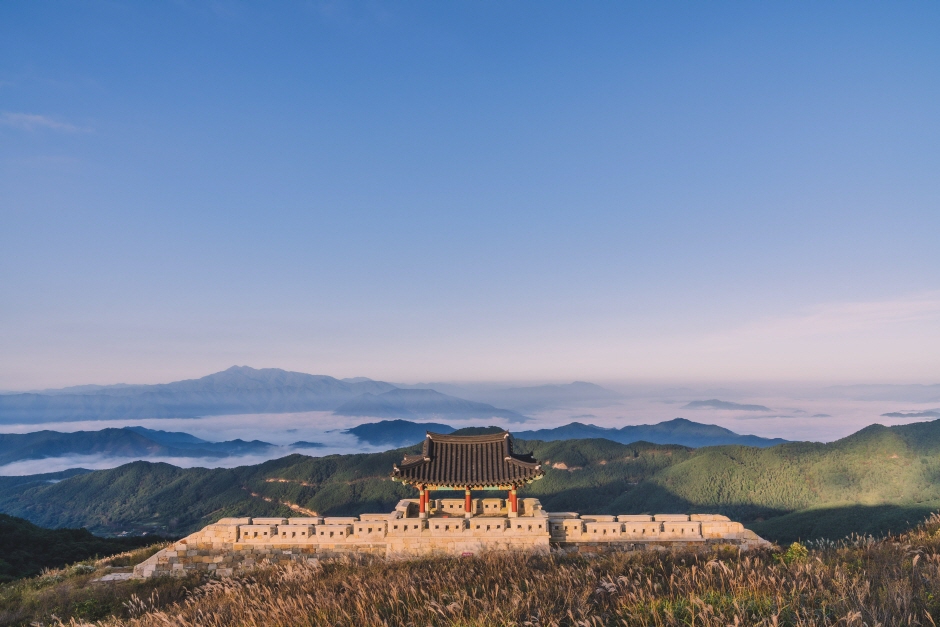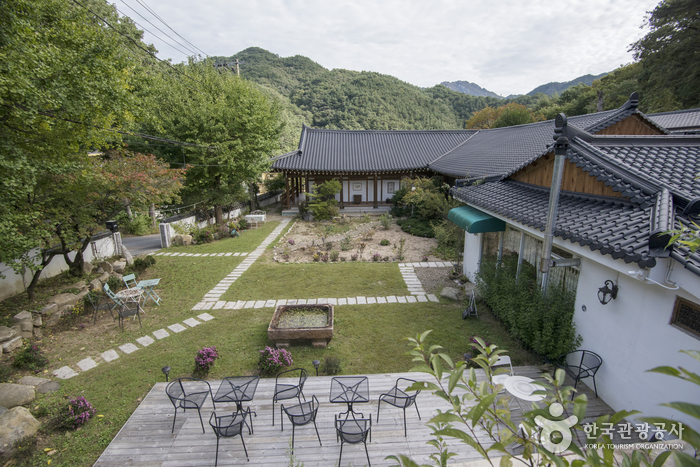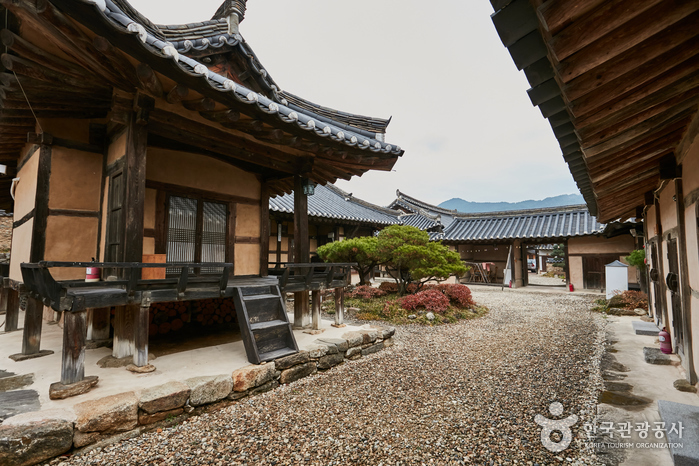Puente Colgante del Monte Udusan (Puente Colgante en Forma de Y de Geochang) (우두산 출렁다리 (거창 Y자형 출렁다리))
11.4Km 2024-10-10
Uisangbong-gil 830, Gajo-myeon, Geochang-gun, Gyeongsangnam-do
Parque Temático Cinematográfico de Hapcheon (합천 영상테마파크)
13.1Km 2025-08-25
Hapcheonhosu-ro 757, Yongju-myeon, Hapcheon-gun, Gyeongsangnam-do
Monte Hwangmaesan (황매산)
17.3Km 2023-05-04
Hwangmaesan-ro 1202-beongil, Chahwang-myeon, Sancheong-gun, Gyeongsangnam-do
Festival de las Azaleas Reales del Monte Hwangmaesan (황매산철쭉제)
17.9Km 2025-04-04
Hwangmaesangongwon-gil 331, Gahoe-myeon, Hapcheon-gun, Gyeongsangnam-do
055-930-4769
El Festival de las Azaleas Reales del Monte Hwangmaesan se celebra anualmente en el Parque Municipal del Monte Hwangmaesan. Este parque incluye el Mosanjae, conocido por ser el mejor camino para hacer excursiones de la nación con los campos más grandes de azaleas; también está el Yeongamsaji (zona del templo Yeonamsa), que se encuentra rodeado por prominentes rocas talladas. En términos de distritos administrativos, el monte Hwangmaesan se extiende a través de los pueblos de Dunnae-ri y Jungchon-ri del municipio de Gahoe-myeon, y de los pueblos Hageum-ri y Hoeyang-ri del municipio de Daebyeong-myeon. Hwangmaesan fue designado como parque municipal el 18 de noviembre de 1983. La montaña ofrece un gran paisaje durante todo el año: en primavera, las flores de azalea cubren los prados interminables; en verano, los visitantes pueden disfrutar de los frondosos y refrescantes valles; en otoño, la montaña se llena de hojas color carmesí; y, en invierno, el viento frío se arremolina alrededor de los picos cubiertos de nieve.
Templo Yeonhosa (연호사)
18.4Km 2021-03-03
Jukjuk-gil 80, Hapcheon-eup, Hapcheon-gun, Gyeongsangnam-do
+82-55-931-2508
El templo Yeonhosa se ubica en Gyeongsangnam-do y por detrás se visualiza el majestuoso monte Hwangusan. Las leyendas locales cuentan que este recinto budista fue construido para consolar el espíritu de los soldados caídos del reino de Silla.
Dals Garden (달의 정원)
18.7Km 2025-06-04
13-31, Chiin 1-gil, Hapcheon-gun, Gyeongsangnam-do
The Dals Garden is a modern facility grafted on a traditional Korean style house. The old but graceful walls with the garden beyond them welcome the guests first. Entering the house, various flower plants and a wide grass garden add to the excitement of travelers. The Toenmaru (a narrow wooden porch running along the outside of the room), pillars and tiles of the neat and well-constructed Korean style house, shine as if they are wiped with oil every day. The peak of Mt. Gayasan beyond the house looks like a picture at a glance. The Moon Garden has 10 rooms in total. Among them, 2 Special Rooms are a little wider than ordinary rooms and equipped with a sink. Though cooking in the room is not allowed, simple food and beverage can be consumed if they are cleaned well afterwards. The room with a single bed is good for a solo traveler or a foreigner who is not accustomed to sleeping in an Ondol room. It takes only 3 minutes to go to Haeinsa Intercity Bus Stop. It is required, however, to pay the admission fee to Haeinsa Temple and the parking fee in addition to the room rates because the house is located on the way to Haeinsa Temple. It is recommended to enjoy walking around the Haeinsa Temple early in the next morning or going up to nearby peaks such as Mt. Maehwasan or Namsan Cheil Peak.
Wonhak Goga (원학고가)
18.8Km 2025-06-04
109-5, Hwangsan 1-gil, Geochang-gun, Gyeongsangnam-do
Suseungdae de Geochang (거창 수승대)
18.8Km 2024-11-19
Eunhari-gil 2, Wicheon-myeon, Geochang-gun, Gyeongsangnam-do
Geochang está situado en la zona montañosa al noroeste de la provincia de Gyeongsangnam-do y comparte fronteras con las provincias de Gyeongsangbuk-do y Jeonbuk-do. Suseungdae se encuentra en el Parque Nacional del Monte Deogyusan, que se ubica en el centro de las tres provincias adyacentes.
Es una de las atracciones turísticas más antiguas de Geochang y fue llamada originalmente Susongdae, ya que era un lugar donde partían los enviados de Baekje a Silla durante la Era de los Tres Reinos. Más tarde, durante el período Joseon, el nombre fue cambiado a Suseungdae. Hoy en día, sus salas de conferencias y pabellones de estilo antiguo ofrecen excelentes puntos de observación para los visitantes. La atracción también está totalmente equipada con una piscina al aire libre, un espacio para hacer acampada y otras instalaciones. En las noches de agosto, también acoge el Festival Internacional de Teatro.
Valle Hongnyudong (홍류동계곡)
19.1Km 2021-02-06
Gayasan-ro 1502-9, Gaya-myeon, Hapcheon-gun, Gyeongsangnam-do.
La hondonada de 4 km que se extiende entre la entrada al Parque Nacional del Monte Gayasan y el templo Haeinsa recibe el nombre de valle Hongnyudong. Mereció esta denominación porque el follaje de esta región se torna tan carmesí en el otoño que el agua que fluye por la cuenca que refleja este color parece carmesí también.
Este es el lugar donde el sabio Choe Chi-Won, tras regresar a Silla (57 a.C.-935) de China halló en semejante desorganización al país que decidió retirarse. Aquí se internó con su vida privada entre las poesías y residió hasta su muerte.
En el valle Hongnyudong hay 19 sitios famosos, incluyendo los principales patrimonios culturales como por ejemplo el pabellón Nongsangjeong, la roca Nakwadam, y las cascadas Bunokpok, entre otros. El paisaje del pabellón Nongsanjeong, donde Choe Chi-Won leyó sus poemas y jugó al baduk (juego del go), tiene una belleza particular. Sobre el lado opuesto se eleva una roca sobre la que se pueden leer los caracteres escritos de puño y letra del sabio maestro Choe Chi-Won.
Las cascadas Yongmun, situadas en el sector norte del valle, muestran un bellísimo panorama con su armoniosa combinación de caídas de aguas cual rollos de seda y las rocas Giamgoeseok. El entorno del valle Hongnyudong cambia a cada estación y esta área puede ser considerada la parte más delicada del monte Gayasan. Durante la primavera, el valle es famoso por la plenitud de azaleas en flor y durante el verano, por sus pinos de mil años y el espeso follaje de árboles que crece tupido, y la fresca y cristalina agua que fluye a través de él. En el otoño, es famoso por los bosques de pino de las inmediaciones y el tupido follaje que se tiñe de colores y acentúa el carmesí de las hojas otoñales, haciendo que el rojo reflejado en las aguas del valle se asemeje a una llama ardiente.





 Español
Español
 한국어
한국어 English
English 日本語
日本語 中文(简体)
中文(简体) Deutsch
Deutsch Français
Français Русский
Русский